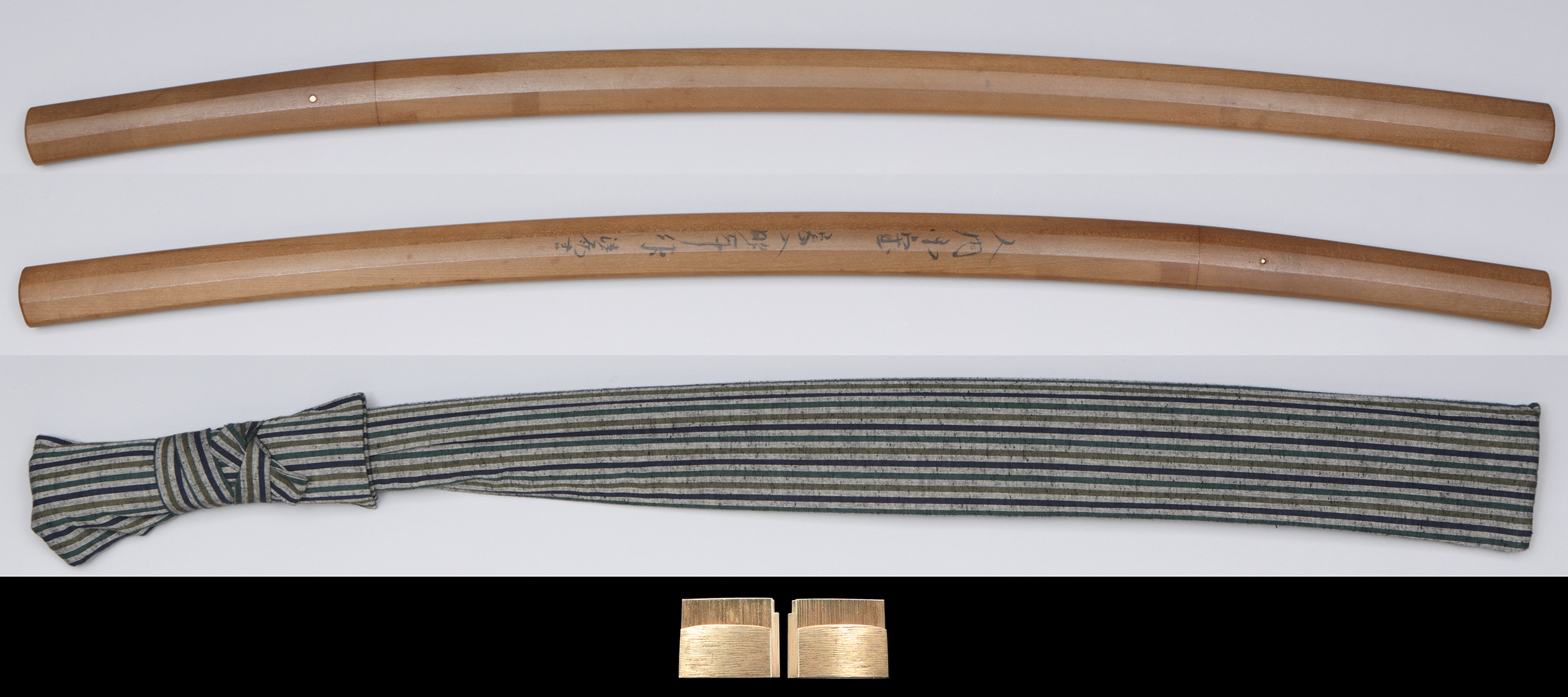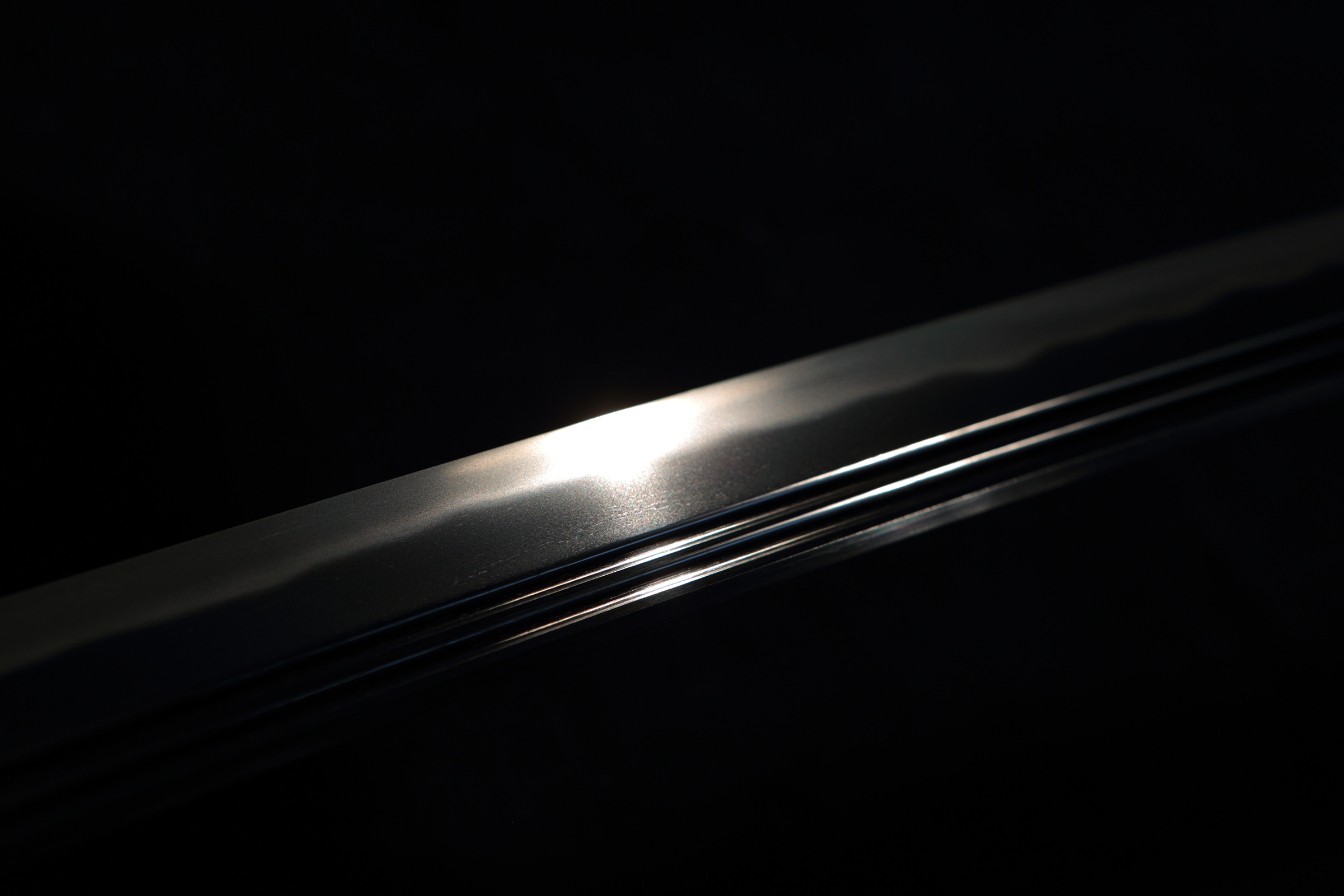
  |
Katana, Shirasaya |
Miyairi Akihira
|
[ Signature ] omote : 以本三枚鍛 宮入昭平作 ura : 昭和二二十八年癸丑春日 |
[ Size ] Blade length 75.4cm (2 shaku 4 sun 9 bu 9 rin), sori 1.8cm (5 bu 9 rin), moto-haba 3.27cm, moto-kasane 0.72cm, saki-haba 2.60 cm, saki-kasane 0.60 cm, mekugi-ana(hole) 1, blade weight 861g , shirasaya length 104cm |
[ Period ] Showa 昭和48(1973) |
[ Province ] Shinano (Nagano) |
 |
[ Feature ] [ Conditions ] Excellent. |
[ Attachments ] Habaki( silver base, gold foiled, double), shirasaya, bag of shirasaya and NBTHK tokubetsu hozon paper "特別保存刀剣鑑定書"(issued on 9th November Reiwa 2(2020)) |
 |
[ Item number ] A090324 [ Price ] SOLD |
Please order by E-mail.

About TOUKEN KOMACHI
BACK
TEL +81-(0)3-5284-9014/ FAX +81-(0)3-5284-9043____E-mail : s_tsukada@toukenkomachi.com
Copyright © 2009-2024 Touken komachi All rights reserved. |